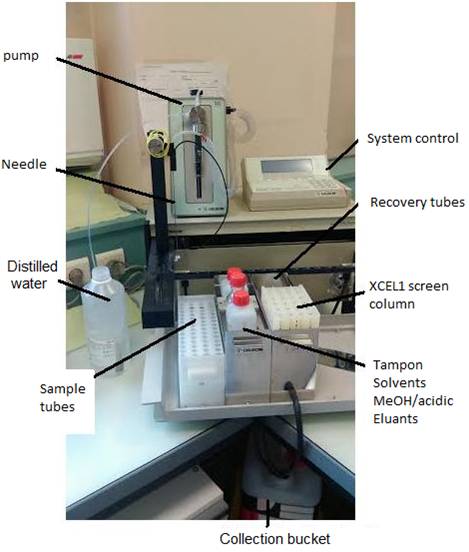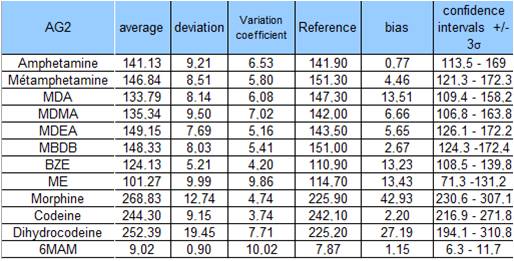|
Introduction
The two months internship was done in the pharmacoly and toxicology laboratory of the army hospital Desgenettes, laboratory has a variety of activities such as forensic analysis, hospital toxicology, traffic control or occupational medicine. A new extraction method development for cocaines, amphetamines and opiates in urine were made. My goal was to implement this extraction technique in the laboratory so it could be used routinely. This liquid/solid extraction is being developed to replace liquid/liquid extraction realized through Toxitubes whose sales have been stopped. This liquid/solid extraction is more selective and allows the remove of more impurities.
Experimental conditions
In order to analyses amphetamines, opiates and cocaines, it was necessary to extract it from plasma with an extractions. Indeed, the Gilson ASPEC system was an automated chromatographic system (Fig 1). To perform the analysis, 1.5 ml of urine was overloaded by a combination of deterated drugs, amphetamines or OPICOC (opiates and cocaines). Then an extraction with the Gilson system was done in several stages. The urine was deposited in XCEL 1 cartridge, which contained a specific polymer with high affinity for amphetamines, opiates and cocaine molecules. Then, the sample was washed to eliminate impurities and every compound was recovered separately in a specific tube. Finally, the solvent contained in every tube was evaporated and complementary analyses were performed according to the protocols of the laboratory.
In second time, tests were realized to verify the accuracy and reliability of the obtained results with using this new extraction method. These tests were done thanks to urinary-controls named “Medidrug”, which were overloaded with drugs. These controls were produced by the company Medichem. The urinary controls precise the concentrations of different drugs, that’s allows to observe the fidelity and accuracy of our results, obtained by our method of extraction, compared to the target data given by Medichem. The drugs analyses were made by observing chromatographic retention times and by using mass spectrometry.
Results
Figure 2 presents the average, standard deviation, variation coefficient, bias, confidence intervals and target values, for the narcotics present in the Medidrug controls. Note that the Medidrug target values were within the confidence intervals calculated by our method. However, the analysis was only conducted on fifteen controls which is not enough. It will take additional controls to get a better estimate of the confidence interval.
Conclusion
Finally, after being validated by the laboratory, the liquid/solid extraction technique for urinary amphetamines, opiates and cocaine establishment was made. Now, the laboratory can use this method routinely but Medidrug controls must be done regularly.
|
|

Gilson ASPEC Liquid / solid extraction system

Results of urinary Medidrug Controls
|




